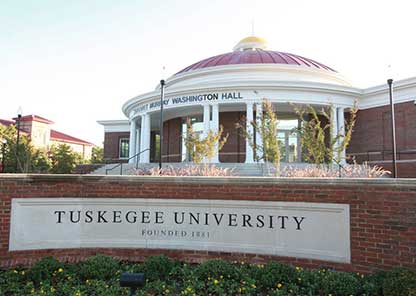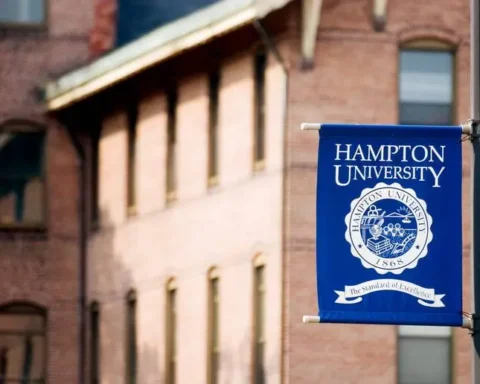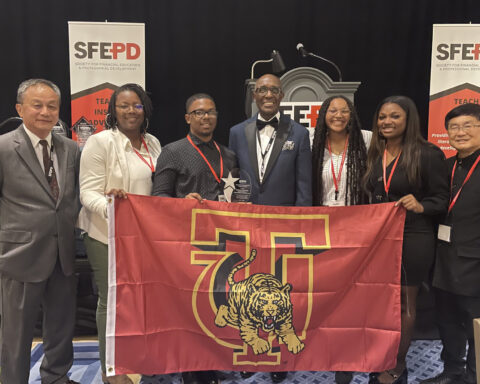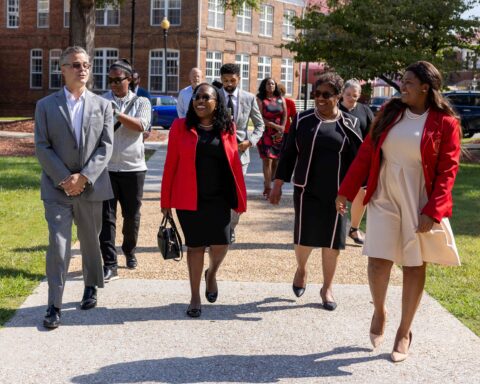By Tuskegee University
Tuskegee University will take part in the University of Alabama led consortium awarded $360 million over the next five years by the National Oceanic and Atmospheric Administration (NOAA). The consortium will focus on translating water research into operations to improve the nation’s ability to predict water-related hazards and effectively manage water resources.
The effort establishes the Cooperative Institute for Research to Operations in Hydrology (CIROH). Headquartered at UA’s Alabama Water Institute (AWI), CIROH consists of 28 academic institutions, non-profit organizations, and government and industry partners, bringing together a powerful team of hydrologic researchers across the United States and Canada. The researchers and collaborators will develop and deliver national hydrological analyses, forecast information, data, guidance, and equitable decision-support services to inform essential emergency management and water resources decisions.
The consortium will assist NOAA’s vision of a water-and weather-ready nation. CIROH will advance water research in support of NOAA’s Office of Water Prediction and reinforce the work of the National Weather Service and National Water Center through collaboration across the scientific community in four broad research themes:
- Water resources prediction capabilities.
- Community water resources modeling.
- Hydroinformatics
- Application of social, economic, and behavioral science to water resources prediction.
CIROH will create curriculum programs across its consortium members and partners to prepare the next generation of water professionals. Local-to-national scale workforce training programs will translate CIROH advances into practice. Extensive outreach and engagement will connect CIROH to stakeholders helping communities build resilience to water-related risks.
The CIROH project will allow Tuskegee University researchers and extension professionals to integrate national water model forecasts into decision support tools for agricultural, environmental, and water resources management for limited resources farmers and communities in Alabama.
Dr. Joseph Quansah, Associate Professor, and director of Tuskegee University Geospatial and Climate Change Center (GCCC) at the College of Agriculture, Environment & Nutrition Sciences (CAENS), is the Principal Investigator for Tuskegee University. Other collaborators include Dr. Raymon Shange, Dr. Souleymane Fall, Dr. Robert Zabawa, all from CAENS, and Dr. Fan Wu of the Computer Science Department.
According to Quansah, CIROH will help build water research capacities at Tuskegee University’s GCCC and provide a tremendous opportunity for collaborative research and engagement with CIROH consortium members. “We aim to develop cutting-edge solutions to improve climate change adaptation, water quality, water resources management, and our ability to deliver time-sensitive water-related outreach and education to limited resources farmers and local communities while providing an opportunity for the education and training of our students,” added Quansah.
Dr. Steven J. Burian, AWI director of science and professor of civil, construction, and environmental engineering, will serve as the executive director of CIROH. “We now begin the real work of co-producing research with NOAA and other partners that will benefit society and provide learning opportunities for students for years to come,” said Burian. “The research innovations delivered by the Cooperative Institute will improve forecasts of floods and droughts, increase the efficiency of water resources management, protect water quality and empower stakeholders to make confident and timely decisions.”
CIROH’s 14 consortium members include The University of Alabama; Brigham Young University; Colorado School of Mines; Tuskegee University; The University of Alabama in Huntsville; University of Arizona; University of California San Diego, Scripps Institution of Oceanography; the University of Hawai’i at Mānoa; University of Iowa; University of Minnesota, Twin Cities; University of Saskatchewan; University of Utah; University of Vermont; and Utah State University.
Consortium partners include Baron Weather Inc.; Coastal Carolina University; Consortium of Universities for the Advancement of Hydrological Science Inc.; Dauphin Island Sea Lab; Gulf of Mexico Coastal Ocean Observing System; Jupiter Intelligence; New Mexico State University; Oak Ridge National Laboratory; The Pennsylvania State University; RTI International; Stevens Institute of Technology; University of California, Davis; the University of Illinois at Urbana-Champaign; and the University of South Carolina.





